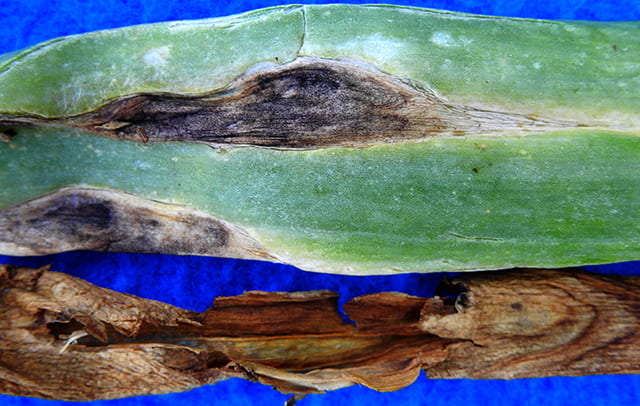While common in major onion-producing areas of New York, this disease was first documented on Long Island during July 2019. This may reflect the fact that on Long Island onion is a minor crop being grown in small plantings in an agriculturally-diverse urban area. The pathogen, Stemphylium vesicarium, is not the same one that affects spinach, which is Stemphylium botryosum f. sp. spinacia. Both are seed-borne. S. vesicarium also infects garlic. Please send reports of suspect occurrences on onion or garlic to mtm3@cornell.edu so we can better understand of its occurrence in the region.
Leaf spots initially are small, water-soaked, and light yellow to brown, and can also be purple. Spots enlarge, elongate, and can coalesce affecting large areas. They often develop alternating rings of light and dark tissue. When the pathogen produces spores the spots look sooty brown. The pathogen first invades dead leaf tissue, thus it tends to follow other diseases such as downy mildew.
Where it occurs routinely it is difficult to control with fungicides because of resistance, which has developed to FRAC 7 and 11 fungicides. Conventional fungicides include Aprovia Top, Inspire Super, and Rovral plus Luna Tranquility which is not permitted used on Long Island.
Please Note: The specific directions on pesticide labels must be adhered to — they supersede these recommendations, if there is a conflict. Any reference to commercial products, trade or brand names is for information only; no endorsement is intended. For up-to-date information on labeled fungicides see Cornell Integrated Crop and Pest Management Guidelines for Commercial Vegetable Production




